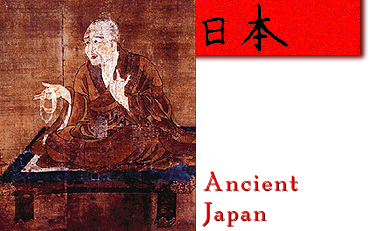



 |
thought and philosophy of the Tokugawa period in Japan (1600-1868), nothing says "Japan" like the Shinto religion. The Tokugawa "Enlightenment" inspired a group of thinkers who studied what they called kokugaku , which can be roughly translated "nativism," "Japanese Studies," or "Native Studies." Kokugaku was no dry-as-dust academic discipline as the term "Japanese Studies" seems to imply; it was a concerted philosophical, literary and academic effort to recover the essential "Japanese character" as it existed before the early influences of foreigners, especially the Chinese, "corrupted" Japanese culture. Recovering the essential Japanese character meant in the end distinguishing what was Japanese from what is not and purging from the Japanese culture various foreign influences including Confucianism (Chinese), Taoism (Chinese), Buddhism (Indian and Chinese), and Christianity (Western European). The kokugakushu ("nativists") focussed most of their efforts on recovering the Shinto religion, the native Japanese religion, from fragmentary texts and isolated and unrelated popular religious practices. Despite this optimism, Shinto is probably not a native religion of Japan (since the Japanese were not the original "natives" of Japan), and seems to be an agglomeration of a multitude of diverse and unrelated religions and mythologies. There really is no one thing that can be called "Shinto," since there are a multitude of religious cults that gather beneath this category. The name itself is a bit misleading, for "Shinto" is a combination of two Chinese words meaning "the way of the gods" (shen : "spiritual power, divinity"; tao : "the way or path") and was first used at the beginning of the early modern period. The Japanese word is kannagara: "the way of the kami ." Calling the religion of the early Japanese "Shinto" is a gross and unsupportable anachronism. Despite the difficulty in pinning down the form and nature of early Shinto, several general assertions can be drawn about it. First, early Shinto was a tribal religion, not a state one. Individual tribes or clans, which originally crossed over to Japan from Korea, generally held onto their Shinto beliefs even after they were organized into coherent and centralized states. |
| Second, all Shinto cults believe in
kami , which generally refers to the "divine." Individual clans
|
| Third, all Shinto involves some sort of
shrine worship, the most important was the Izumo Shrine on the coast of
the Japan Sea. Originally, these shrines were either a piece of unpolluted
land surrounded by trees |
| Unfortunately, we know almost nothing at
all about early Shinto, since nobody wrote about it. Early Shinto may, in
fact, be a myth; what is called early Shinto may simply be a large number
of unrelated local religions that began to combine with the advent of
centralized states. History has accreted an enormous amount of non-Shinto
ideas into this original religion: Buddhism, Confucianism,
Neo-Confucianism have all significantly changed the religion.
The two great texts of Shinto belief and mythology, the Kojiki (The Records of Ancient Matters ) and the Nihongi (Chronicles of Japan ), were written down around 700 A.D., two centuries after Buddhism had been declared the state religion of Japan. Although these texts contain the only versions of Shinto mythology, including Shinto creation stories, both of these texts are heavily influenced by both Buddhism and Confucianism and the stories of the kami had been deeply corrupted by Chinese and Korean thought long before. |